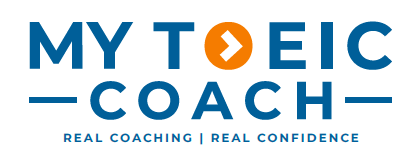⚡ TOEIC Word Choice: Why “He Runs Quick” Is Wrong — and How to Beat the -ly Trap
TOEIC loves this: a sentence that feels fine… until you pick the word that sinks your score. The pattern is simple: are you describing a thing or how something is done? Get that right and you’ll stop bleeding points.
1️⃣ The One-Line Rule
Describing a thing → plain form (quick, clear, efficient).
Describing how it’s done → -ly form (quickly, clearly, efficiently).
Quick check (not a question):
He runs fast. ✅
He runs fastly. ❌
2️⃣ TOEIC Hides It After Action Words
When the sentence tells how someone did something, choose the -ly form.
Question:
The manager handled the situation ______.
(A) calm
(B) calmly
(C) calming
(D) calmness
✅ Answer: (B) calmly. We’re describing how it was handled. (A) names a quality, (C) and (D) don’t fit the sentence.
3️⃣ Describing a Thing vs How It’s Done
Question:
The instructions were ______ and easy to follow.
(A) clear
(B) clearly
(C) clarity
(D) clarify
✅ Answer: (A) clear. We’re describing the instructions (a thing).
Question:
She explained the new policy ______.
(A) clear
(B) clearly
(C) clearance
(D) clearing
✅ Answer: (B) clearly. We’re describing how she explained.
4️⃣ Pairs That TOEIC Uses Over and Over
quick/quickly, clear/clearly, efficient/efficiently, polite/politely, correct/correctly, quiet/quietly, slow/slowly, loud/loudly.
Question:
The team finished the upgrade ______.
(A) efficient
(B) efficiency
(C) efficiently
(D) efficiencies
✅ Answer: (C) efficiently. It’s how they finished.
Question:
It was a ______ meeting, so we ended on time.
(A) quickly
(B) quick
(C) quickest
(D) quickness
✅ Answer: (B) quick. Describing the meeting (a thing).
5️⃣ TOEIC’s Fake Friends (-ly Lookalikes)
fast is already correct for actions. Never use fastly.
Question: He runs ______.
(A) fast
(B) fastly
(C) fasterly
(D) with fast
✅ Answer: (A) fast.hard (works hard) ≠ hardly (“almost not at all”).
Question: She ______ meets deadlines.
(A) hard
(B) hardly
(C) harden
(D) hardness
✅ Answer: (B) hardly. Means “almost never.” Be careful.late (arrived late) vs lately (“recently”).
Question: He arrived ______ to the briefing.
(A) lately
(B) later
(C) late
(D) latest
✅ Answer: (C) late.
6️⃣ Fastest Way to Get It Right (Checklist)
Thing or action? Thing → plain form. Action → -ly.
After words like explain, handle, reply, work, finish, expect the -ly form.
Watch fake friends: fast (OK), hard vs hardly, late vs lately.
If two answers both “look right,” ask: “Am I naming a quality (thing) or describing how it’s done (action)?”
🎯 Practice (TOEIC Style)
Q1. The engineer responded to the issue ______.
(A) quick
(B) quickly
(C) quickness
(D) quickest
✅ Answer: (B) quickly. Describes how the engineer responded.
Q2. The report is ______ and ready for submission.
(A) clearly
(B) clarity
(C) clear
(D) clearerly
✅ Answer: (C) clear. Describes the report.
Q3. Our support team replied ______ to all client emails.
(A) polite
(B) politely
(C) politeness
(D) politic
✅ Answer: (B) politely. Describes how they replied.
📌 Strategy / Takeaway
Name a quality → plain form.
Describe how it’s done → -ly.
Memorise the repeat pairs and the fake friends.
Slow down for one second, ask the question, pick the winner.
Final Word
TOEIC’s -ly traps feel natural but cost easy points. Decide “thing or action,” then choose the form that matches.
For more strategies and resources to master TOEIC word choice with -ly, visit the English Library Collection and start locking in word choice with -ly confidence today.

